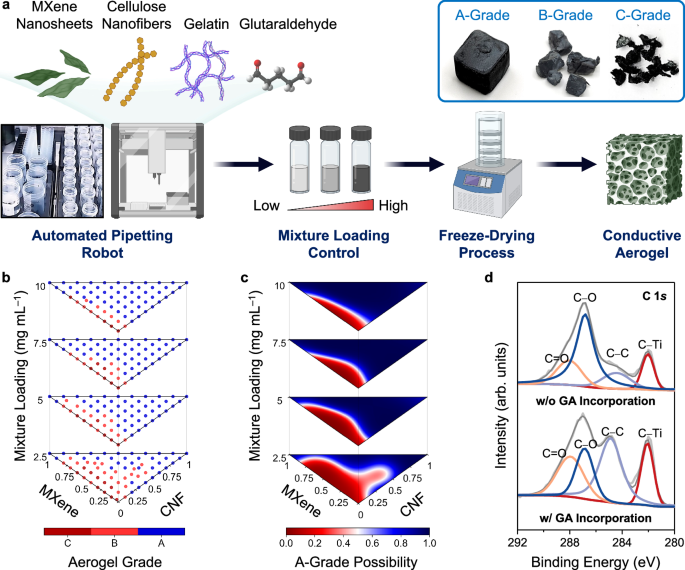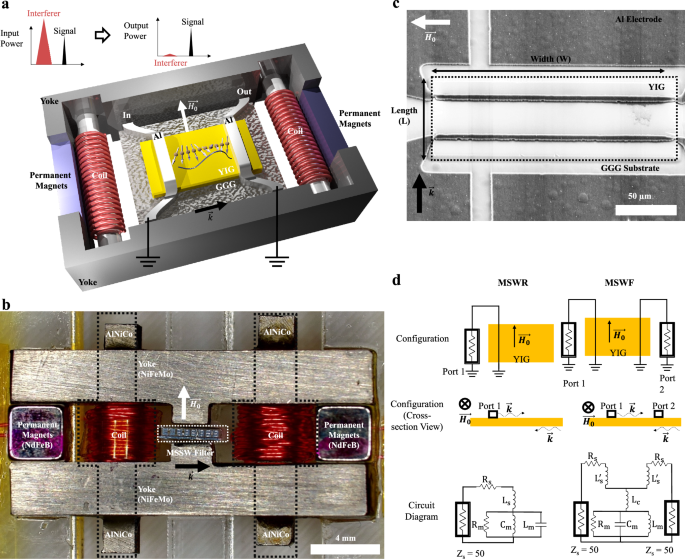2024-06-03 アメリカ合衆国・メリーランド大学(UMD)

・ UMD が、ウェアラブルヒーターの材料設計を加速させる機械学習(ML)モデルを開発。
・ 試行錯誤による実験プロセスはイノベーションを遅らせるものだが、新技術は機械学習と協調ロボット工学を活用して設計プロセスを自動化する。
・ 空気を含んだ軽量で多孔性のエアロゲルは、その機械的強度と柔軟性から断熱材やウェアラブルテクノロジーに利用されている。単純に見える性質にもかかわらず、その製造ラインは極めて複雑。同材料の設計には無数の実験とそれらの経験に基づく手法を用い、広大なデザインスペースを模索している。
・ 本研究では、ロボット工学、機械学習アルゴリズムおよび材料科学の専門知識を組み合わせ、プログラム可能な機械的・電気的特性を備えたエアロゲルの設計を可能にすることで科学的な障壁を克服。この予測モデルは、95%の精度で持続可能な製品を生成するように構築されている。
・ 高品質の実験データが不足しているため、機械学習設計の導入は容易ではない。ロボット工学と機械学習を組み合わせた新たなワークフローは、データの品質と収集率を向上させるだけでなく、複雑なデザインスペースの探索を支援する。
・ 新 ML モデルで得られた強く柔軟なエアロゲルは、導電性チタンナノシートと天然成分(セルロース:植物細胞に含まれる有機化合物、ゼラチン:動物の組織や骨に含まれるコラーゲン由来のタンパク質)の天然成分で構成される。
・ 同ツールはさらに、エアロゲル設計の他のアプリケーションにも対応するように拡張もできる。流出した原油の洗浄、持続可能なエネルギー貯蔵や断熱窓等の熱エネルギー製品に向けたグリーンテクノロジーの利用が予想以上に早く実現できる可能性がある。
・ 今後は、エアロゲルの柔軟性と強度特性に関与する微細構造の理解に向けた研究を実施する予定。
・ 本研究には、UMD のスタートアップファンド、国家科学及技術委員会(MOST)-米国空軍科学研究局(AFOSR) Taiwan Topological and Nanostructured Materials Grant や Energy Innovation Seed Grant from
Maryland Energy Innovation Institute 等が資金を提供した。
URL: https://eng.umd.edu/news/story/racing-against-rampd-ai-collaborative-robotics-automates-wearable-tech-design
<NEDO海外技術情報より>
関連情報
Nature Communications 掲載論文(フルテキスト)
Machine intelligence accelerated design of conductive MXene aerogels with programmable properties
URL: https://www.nature.com/articles/s41467-024-49011-8
Abstract
Designing ultralight conductive aerogels with tailored electrical and mechanical properties is critical for various applications. Conventional approaches rely on iterative, time-consuming experiments across a vast parameter space. Herein, an integrated workflow is developed to combine collaborative robotics with machine learning to accelerate the design of conductive aerogels with programmable properties. An automated pipetting robot is operated to prepare 264 mixtures of Ti3C2Tx MXene, cellulose, gelatin, and glutaraldehyde at different ratios/loadings. After freeze-drying, the aerogels’ structural integrity is evaluated to train a support vector machine classifier. Through 8 active learning cycles with data augmentation, 162 unique conductive aerogels are fabricated/characterized via robotics-automated platforms, enabling the construction of an artificial neural network prediction model. The prediction model conducts two-way design tasks: (1) predicting the aerogels’ physicochemical properties from fabrication parameters and (2) automating the inverse design of aerogels for specific property requirements. The combined use of model interpretation and finite element simulations validates a pronounced correlation between aerogel density and compressive strength. The model-suggested aerogels with high conductivity, customized strength, and pressure insensitivity allow for compression-stable Joule heating for wearable thermal management.



